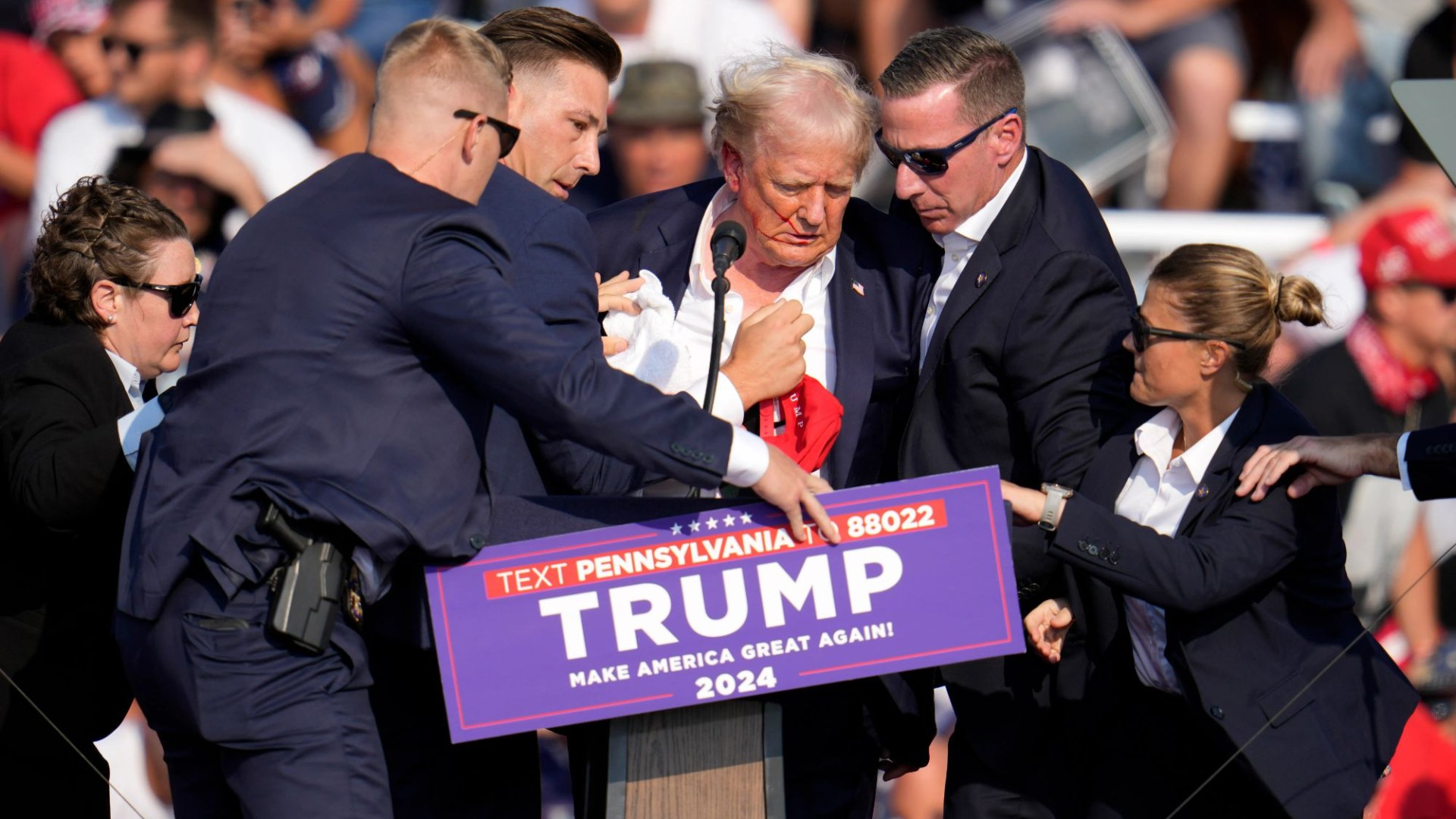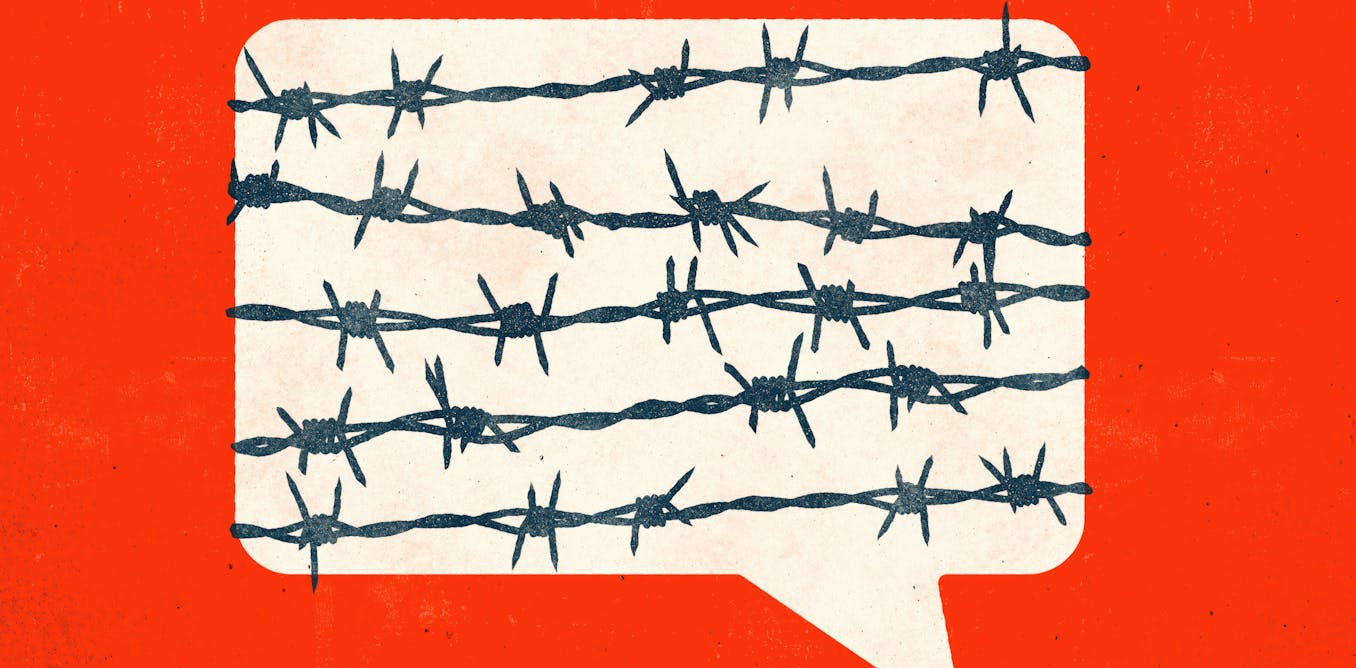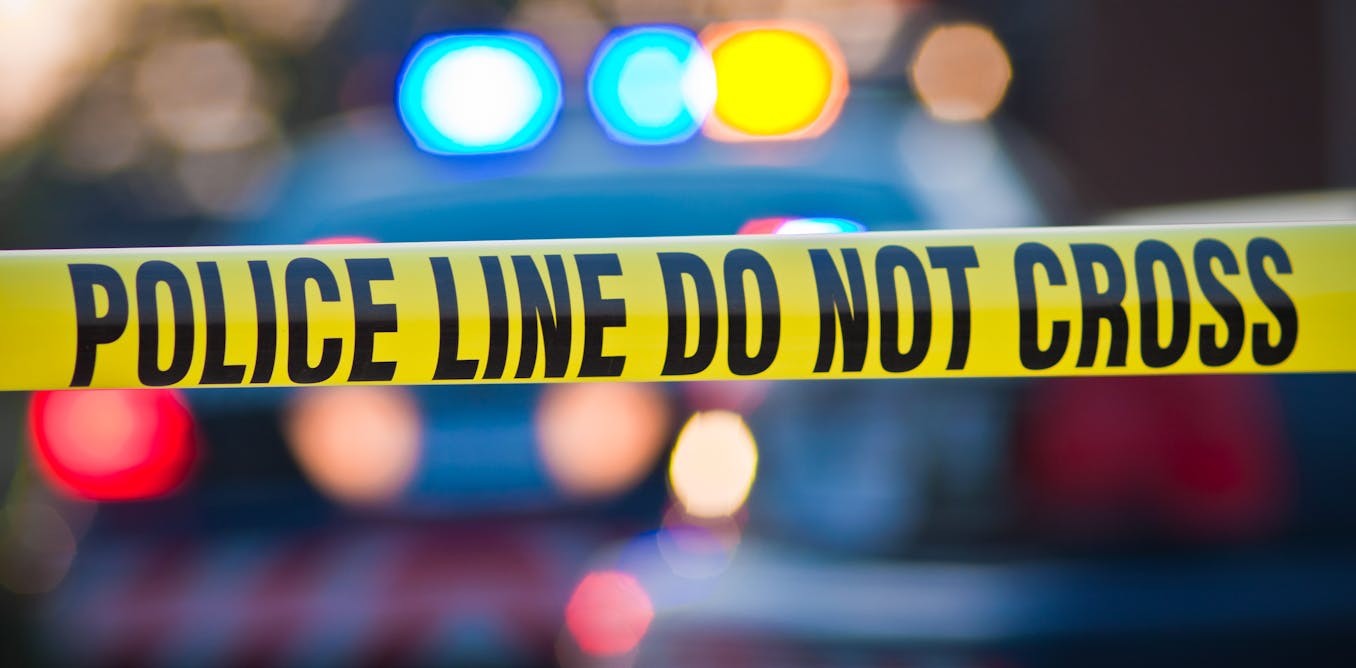THE Secret Service is facing the toughest election period ever – and security bosses are bracing for unrest, a former chief has warned.
A.T. Smith – who spent nearly 29 years in the Secret Service – fears there is “no end in sight” for the tensions plaguing the US and more violence could be on the cards.
12

12

12

12
It comes after both Trump and Democrat nominee Kamala Harris were forced to speak from behind bullet-proof glass after an assassination attempt on the former president’s life.
Frank Carillo, 66, of Winchester, Virginia, was also charged in August with making violent threats against Harris’ life when he said she “needs to be put on fire alive”.
Congress is reportedly already preparing for post-election violence by hiring more state troopers to guard the grounds, according to Axios.
A number of other violent kidnapping and assassination plots have previously been connected to elections – including against Michigan Governor Gretchen Whitmer in 2020 by a far-right militia.
Read more on the election
Mr Smith, deputy director of the Secret Service between 2012 and 2015, told The Sun: “I think the possibility of some level of unrest is very likely if Donald Trump wins.”
Although Mr Smith did not specify the type of unrest, it is feared the election could spark similar violence to January 6.
Trump’s supporters stormed the Capitol – smashing windows and breaking into offices to stop the certification of the 2020 election after they refused to accept the Republican’s narrow loss to Joe Biden.
US voters are worried about more post-election violence – with four in 10 worried about violent attempts to overthrow the result.
It would be tough task for the Secret Service to manage the unrest, he said.
The Secret Service is the last line of defence between politicians and a wannabe assassin.
They trust other law enforcement agencies to stop a potential killer long before anyone gets close – but in a political campaign, their charges are out in public.
Mr Smith added: “The Secret Service will continue to carry out its protective mission regardless of what might happen.
“Without a doubt, this has been the toughest election cycle for the Secret Service to deal with.
“The fact that America is so divided and the caustic political rhetoric that continues to divide the country seems to have no end in sight.”
After the two assassination attempts on Trump, Mr Smith said: “This is always a problematic time for the Secret Service.
“There’s always lessons to be learned – any time there is an attempt, that shows the vulnerability.”

12

12
He added: “An attempt shows a vulnerability, and then it allows you to go back and explore that vulnerability, and hopefully if you’ve learned the lesson, you fix it.
“The Secret Service has always had to do that.
“They’ve been very good over the years of doing it.
“After the Kennedy assassination, long-range rifles, which had never been a problem in assassination attempts, became a problem.
“The service became very proactive about that.
“That’s how the counter-sniper teams were born, to be able to deal with long-range issues.”
Recent surveys indicate that more 60 per cent of the Americans are concerned about the possibility of election-related unrest, regardless of which party wins.
The Secret Service came under intense scrutiny for failing to stop the attempted assassination attempts on Trump during the campaign.
Trump has begun delivering speeches from behind a bulletproof glass screen.

12

12
Security specialist Will Geddes previously said of the Secret Service: “They have already lost face, and they will continue to lose face, should they fail again.
“The Secret Service will have been entirely discredited worldwide, and may even have to be entirely overhauled.”
Trump was shot in the ear by lone wolf gunman Thomas Crooks in the shocking first assassination attempt back in July.
Crooks was positioned on a nearby roof and surveyed the location with a drone beforehand.
Secret Service agents bundled Trump to the ground, and the gunman was quickly taken out by a sniper.
Trump returned in October to the scene of the first assassination attempt in Butler, Pennsylvania.
Bunkers for surviving the US election

AMERICANS worried about the country collapsing around the presidential election have turned to survival bunkers, reports The Times.
Business is booming for companies like Vivos Group which has turned 575 WW2 bunkers in South Dakota into hidey holes.
They’ve reported a 200 per cent increase in applications this month compared to September.
Dante Vicino, the group’s executive director, said: “We’re seeing a major increase in demand right now, due to it being an election year in the USA with high tensions and concerns regardless of the outcome.
“Let’s face it, the world is a scarier place now more than ever before … People are tired of sticking their heads in the proverbial sand and are waking up to the need to be better prepared.”
Luxury bunkers start at a whopping $35,000USD (£27,000) meaning only a few with some spare cash will be snapping them up.
Trump pledged to his followers to never quit, “not even in the face of death itself”.
He joked: “A very big thank you to Pennsylvania.
“We love Pennsylvania, and as I was saying…”
Trump faced a second assassination attempt on September 15 as he played golf near Mar-a-Lago in Florida.
While the former president was walking around the green a man was found in the bushes aiming a rifle through the shrubbery.
Suspect Ryan Wesley Routh, 58, was charged with attempting to assassinate Trump.
The would-be assassin, who managed to get within 400-500 yards of Trump, attempted to flee the scene in an SUV but was caught by officials and taken into custody.
What US presidents have been assassinated or almost killed?
THROUGHOUT US history, four presidents have been assassinated while in office, and several others survived assassination attempts.
These tragic events have had profound effects on the nation and led to significant changes in how presidential security is handled.
The first U.S. president to be assassinated was Abraham Lincoln, the 16th president, on April 14, 1865. Just days after the Civil War ended, Lincoln was shot by John Wilkes Booth, a Confederate sympathizer, while attending a play at Ford’s Theatre in Washington, D.C. Lincoln succumbed to his injuries the following day, leaving the country in shock during a pivotal time of reconstruction.
In 1881, James A. Garfield, the 20th president, was shot by Charles J. Guiteau, a disgruntled office seeker. Garfield was shot on July 2, 1881, at a train station in Washington, D.C., and suffered for months from infections caused by the wounds before dying on September 19, 1881. His death brought attention to the issues of medical care and political patronage.
The third assassination occurred in 1901, when William McKinley, the 25th president, was shot by anarchist Leon Czolgosz during a public event at the Pan-American Exposition in Buffalo, New York. McKinley initially survived the shooting on September 6, 1901, but died from gangrene caused by his wounds on September 14. His death ushered in the presidency of Theodore Roosevelt and marked a turning point in how political violence was viewed.
The most recent assassination of a U.S. president occurred on November 22, 1963, when John F. Kennedy, the 35th president, was shot while riding in a motorcade in Dallas, Texas. Kennedy was killed by a sniper’s bullet, with Lee Harvey Oswald named as the official assassin. The event left a lasting impact on American society and continues to be the subject of much debate and conspiracy.
Several other U.S. presidents survived serious assassination attempts.
Andrew Jackson, the 7th president, faced the first recorded attempt in 1835, when Richard Lawrence tried to shoot him outside the U.S. Capitol. Remarkably, both of Lawrence’s pistols misfired, and Jackson defended himself with his cane.
In 1912, Theodore Roosevelt was shot while campaigning for a third term after his presidency. He survived because the bullet was slowed by his glasses case and a thick speech in his pocket, and he famously went on to finish his speech before seeking medical help.
Franklin D. Roosevelt, before taking office, narrowly avoided an attempt on his life in 1933. During a public event in Miami, Giuseppe Zangara fired at Roosevelt but missed, killing Chicago Mayor Anton Cermak instead.
Harry S. Truman faced a more organized attempt in 1950 when two Puerto Rican nationalists tried to storm Blair House, where he was staying. A gunfight ensued, but Truman was unharmed.
In 1975, Gerald Ford survived two assassination attempts within the same month. First, Lynette “Squeaky” Fromme, a follower of Charles Manson, attempted to shoot him in Sacramento, California, but her gun failed to fire. Just 17 days later, Sara Jane Moore fired a shot at Ford in San Francisco but missed.
Lastly, in 1981, Ronald Reagan was shot by John Hinckley Jr. outside a hotel in Washington, D.C. Reagan was seriously injured but recovered after surgery, and the incident led to heightened security measures for future presidents.

12

12

12

12




